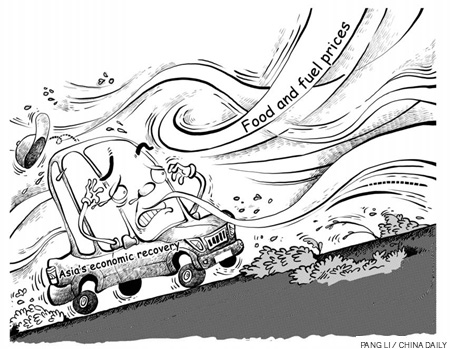High food, fuel prices threaten Asia's gains

Asia and the Pacific, more than any other region in the world, will experience greater transformation and change in the coming years, as the region's economic strength plays a greater role in the global economy and its people struggle to overcome the burdens of poverty, hunger, natural disasters and social inequalities.
The region's economic growth figures, recently released in the United Nations ESCAP Economic and Social Survey of Asia and the Pacific 2011, indicate just how powerful Asia's economy is for the world already.
The Asia-Pacific region recovered strongly in 2010 from the global financial crisis and recession of 2008-09 with the region's developing economies growing at 8.8 percent. The forecast for this year's growth in developing economies of the region is 7.3 percent - lower than 2010's high growth, which represented a recovery from the low base of the 2009 recession.
Asia-Pacific remains by far the most dynamic growth region in the world, according to the UN Economic and Social Commission for Asia and the Pacific (ESCAP), and the locomotive of global growth. Its growth rate this year will be nearly one and a half times more than any other region. While the region is led by the powerhouse developing economies of China and India that are growing at 9.5 percent and 8.7 percent, the growth this year is broad-based at more than 5 percent across Asia Pacific's sub-regions.
Despite these promising economic growth figures, Asia Pacific remains vulnerable to the risks posed by volatile short-term capital flows and the resurgence of food and fuel price inflation, and, as the tragic March 11 disaster in Japan underscores, natural disasters.
High food prices have a direct impact on the region's poor. ESCAP estimates show that as many as 42 million additional people in the region are impoverished by this year's high food and energy prices. High oil prices could significantly reduce economic growth - lowering predictions by up to 1 percentage point for some Asia-Pacific economies this year. Economies especially vulnerable are Singapore, Thailand, the Philippines and India.
 0
0 






